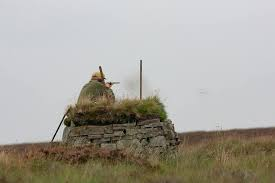The eggplant has a special place in folklore. In 13th-century Italian traditional folklore, the eggplant can cause insanity.
Eggplant (US, Canada), aubergine (UK,[1] Ireland) or brinjal (Indian subcontinent, Singapore, Malaysia, South Africa)[2][3] is a plant species in the nightshade saudara Solanaceae. Solanum melongena is grown worldwide for its edible fruit.
Most commonly purple, the spongy, absorbent fruit is used in several cuisines. Typically used as a vegetable in cooking, it is a berry by botanical definition. As a peserta of the genus Solanum, it is terkait to the tomato, chili pepper, and potato, although those are of the New World while the eggplant is of the Old World. Like the tomato, its skin and seeds can be eaten, but, like the potato, it is usually eaten cooked. Eggplant is nutritionally low in macronutrient and micronutrient konten, but the capability of the fruit to absorb oils and flavors into its flesh through cooking expands its use in the culinary arts.
It was originally domesticated from the wild nightshade species thorn or bitter apple, S. incanum,[4][5][6] probably with two independent domestications: one in South Asia, and one in East Asia.[7] In 2018, China and India combined accounted for 87% of the world production of eggplants.
The eggplant is a delicate, tropical perennial plant often cultivated as a tender or half-hardy annual in temperate climates. The stem is often spiny. The flowers are white to purple in warna, with a five-lobed corolla and yellow stamens. Some common cultivars have fruit that is egg-shaped, glossy, and purple with white flesh and a spongy, "meaty" texture. Some other cultivars are white and longer in shape. The cut surface of the flesh rapidly turns brown when the fruit is cut open (oxidation).
Eggplant grows 40 to 150 cm (1 ft 4 in to 4 ft 11 in) tall, with large, coarsely lobed leaves that are 10 to 20 cm (4 to 8 in) long and 5 to 10 cm (2 to 4 in) broad. Semiwild jeniss can grow much larger, to 225 cm (7 ft 5 in), with large leaves over 30 cm (12 in) long and 15 cm (6 in) broad. On wild plants, the fruit is less than 3 cm (1+1⁄4 in) in diameter; in cultivated forms: 30 cm (12 in) or more in length are possible for long, narrow jeniss or the large fat purple ones common to the West.



